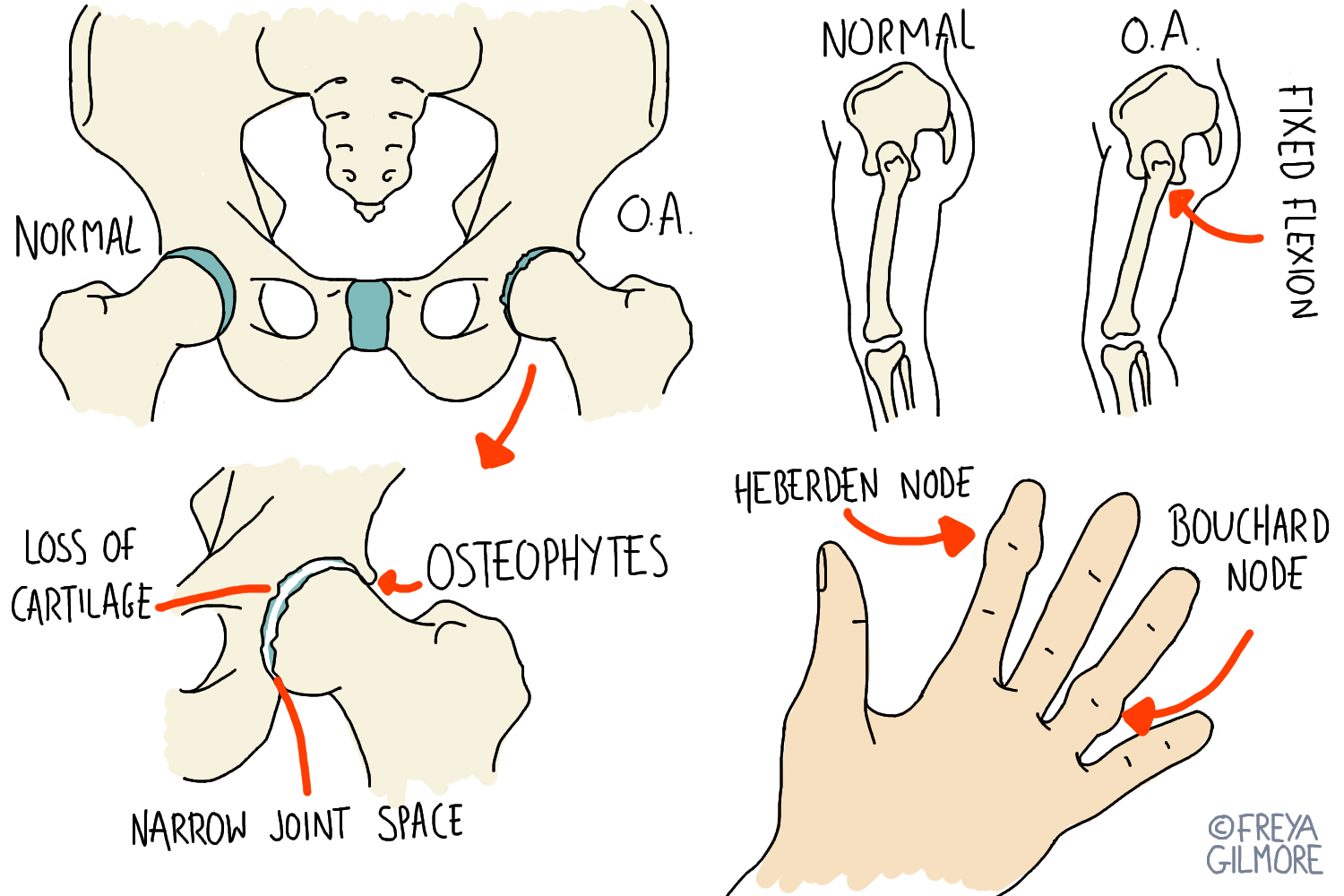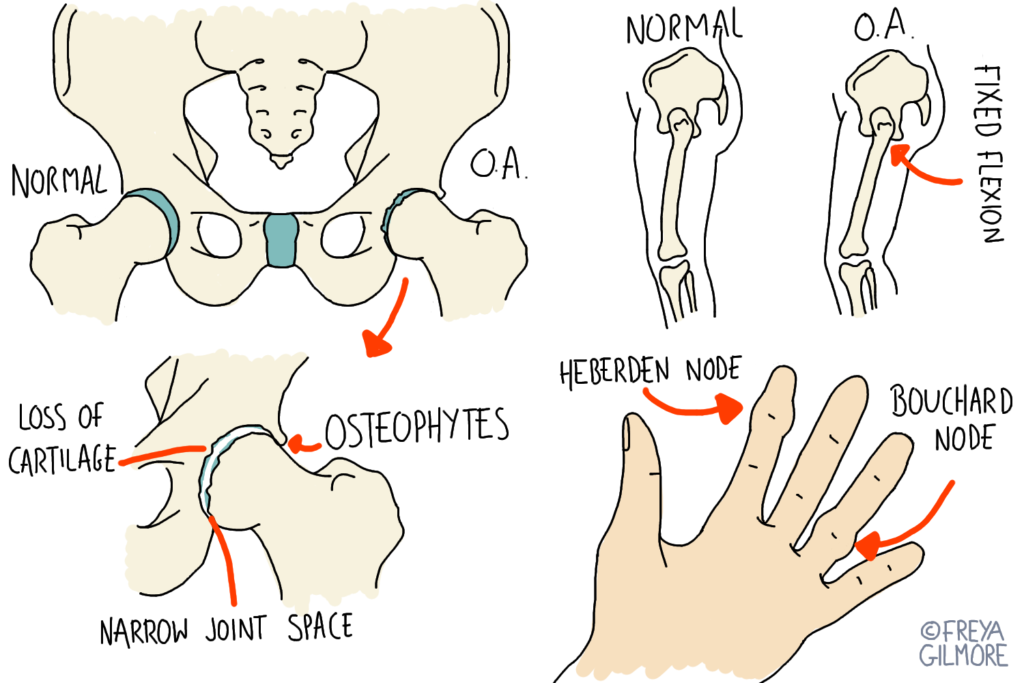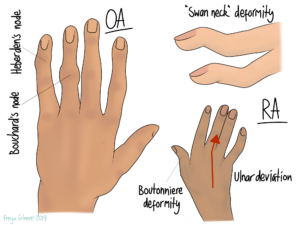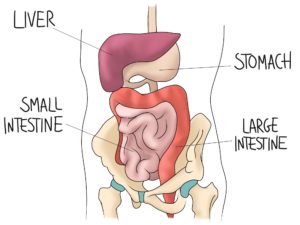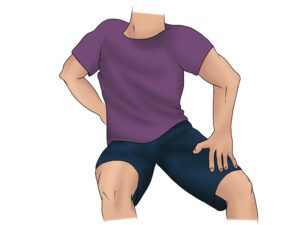In this post we will be focusing on osteoarthritis (OA), not rheumatoid arthritis (RA). OA is the normal kind of arthritis frequently seen in older people. It can affect any joint that has cartilage inside it- which applies to most joints.
How arthritis starts
Although we think of this kind of arthritis as “wear and tear” or even “something you just have to live with”, there are ways around it.
Cartilage has a poor blood supply, but it is still living tissue so needs access to nutrients. It also produces waste products that need to be removed. Luckily, everyday movements do exactly this. When you move a joint through its full range, you move pressure through the whole surface of cartilage. This means at some point, every part of that cartilage will be compressed, to squeeze out waste. When the pressure is removed, nutrients can take the place of the waste products.
If part of the cartilage is injured, it may be too painful to use the joint normally. This is fine in the short term, but in the long term it can cause arthritis. Alternatively, if movement is lost through general inactivity, it might go unnoticed until the body has adapted to this new normal. If movement is not returned to the whole joint, there will be parts that are under constant pressure, and others with no pressure on them. As a result, the affected cartilage becomes unhealthy and prone to further injury or damage.
For this reason, it is worth getting even minor injuries assessed as they heal, just to make sure there are no compensations that can cause problems later.
Symptoms
By the time an arthritic joint becomes symptomatic, it may have already adapted a lot. Typical symptoms include:
- Stiffness in the joint
- Tightness in the muscles around it
- Crunchiness in the joint on movement
- Aches or sharp pains in the joint
If left alone, the joint often becomes more restricted. The body tries to protect itself, and its default method of doing so is to restrict movement. Unfortunately this is the exact opposite of what it needs. When arthritis progresses, it becomes harder to manage. As joint health becomes poorer, changes occur beneath the cartilage. Cysts can form between bone and cartilage, and where cartilage has died back, it may be replaced by bone. Bony spurs can form around the lip of the joint too, which causes more permanently reduced movement. At this point you may want to consider a joint replacement if appropriate. Osteopathy can still support you while you’re waiting for it, and we can help rehabilitate after.
Management
You may have already worked out the solution: bring back movement to the whole joint. It can be very difficult to do this alone. Feeling pain on movement is hard to work through without guidance. In your sessions with the osteopath, you can expect some of this movement to be done for you. Not only does this kick-start the necessary pumping of the cartilage, it also teaches the brain that the movement is safe. Muscles will be restricting the joint to protect it, especially over larger joints. We can work to relax these off during your sessions and give you exercises to keep it going between appointments. You may even leave your appointment feeling some immediate benefit.
As mentioned above, you want to address this sooner rather than later, especially for joints that can’t be replaced! It’s never too early to start managing your arthritis.
If you suffer from arthritis, address it now. Make an appointment online today.

